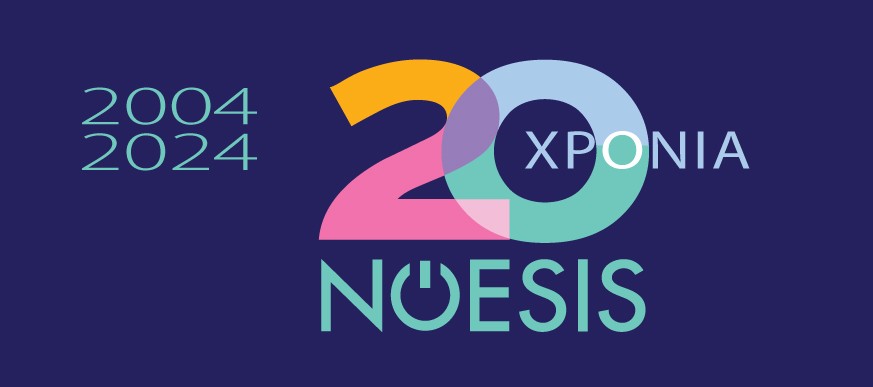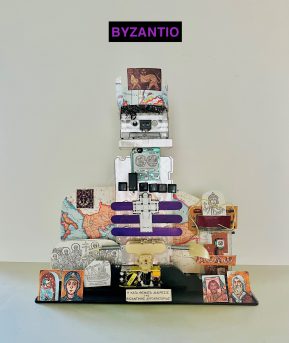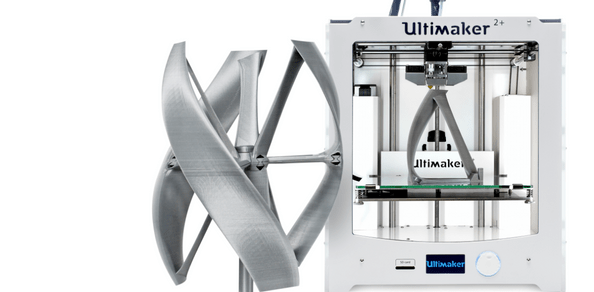Programs for children and teenagers
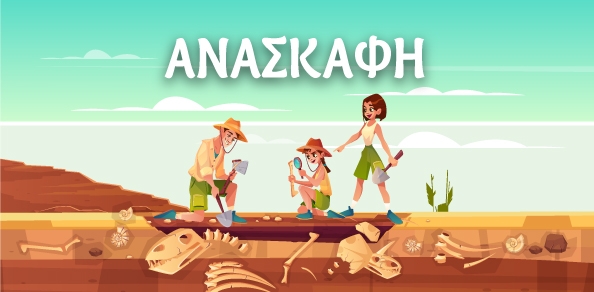
Laboratory for the acquaintance of primary school children with geo-sciences (earth sciences).
The little paleontologists use the scientific knowledge and special equipment to discover mysterious fossils in the Museum. Duration: 2 hours
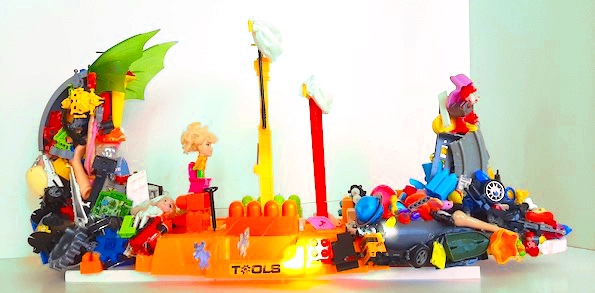
We discover robotics and we unleash our imagination and creativity, recycling and reusing our old toys
A program that combines the introduction to robotics, programming, creative construction and learning, through the practice of children's free imagination. There will be 3 workshops for Kindergarten students up to 2nd grade. With a focus on education, learning, entertainment and creation, we will get to know the electrical circuit through conductive plasticine. We will learn the rules and principles of robotics and drawing inspiration from ancient Greece and its technological achievements, with sensors and motors, we will complete our creations. Our constructions will be part of a collection that will remain and will be exhibited at NOISIS in June 2022. The deconstruction of the concept of "old" or "damaged" toy is the basic principle of the workshops. The combination of heterogeneous materials, learning and entertainment is the basic structure of the complex program of Creative Robotics. The program was designed and implemented by the artist Georgios Antonogiannakis (Georgios GreeKalogerakis) and is based on his postgraduate studies in Art and Technology (MA Computational Arts). The workshops are presented by him and the team of AgoGreece (www.agogreece.com), having as main axis the feedback and the continuous development of the program.Children compose a unique work of art, based on an art movement with elements of technology from decades past
For 3rd to 5th grade students
With this particular program we help children to appreciate visual arts in different ways and on multiple levels. We encourage them to get to know various artistic currents (Realism, Surrealism, Cubism, Expressionism, Fauvism, etc.) and to relate the modern state-of-the-art technology to the corresponding technology of the 80s and 90s.
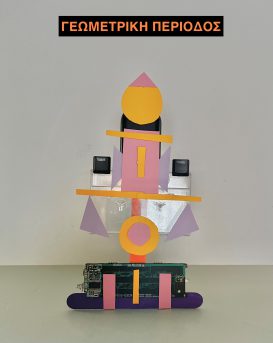 Through the process of re-use (Up-Cycling) the children compose a unique work of art, which includes elements of technology from these past decades, based on a different art movement each time. During the workshop, the parts and electronic components resulting from the disassembly of cassette players, CD players, video players, etc. they are the basic material (Found Object) for the creation of a work of art by each student.
Through the process of re-use (Up-Cycling) the children compose a unique work of art, which includes elements of technology from these past decades, based on a different art movement each time. During the workshop, the parts and electronic components resulting from the disassembly of cassette players, CD players, video players, etc. they are the basic material (Found Object) for the creation of a work of art by each student.
The announced cycle will be completed in 3 workshops and includes the theory about the corresponding artistic movement and its capture on paper for better understanding.
The program was designed and implemented by the visual artist Georgios GreeKalogerakis and is based on his postgraduate studies in Art and Technology (MA Computational Arts). The workshops are presented by him and the AgoGreece (www.agogreece.com) team, with feedback and the continuous development of the program as the main axis.
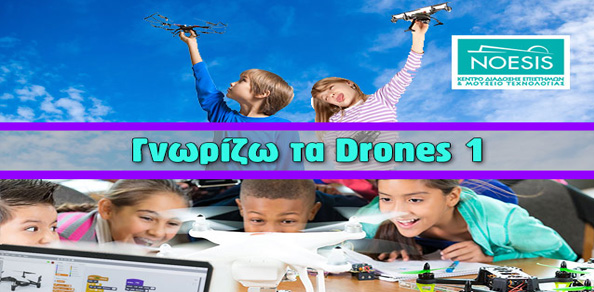
NOESIS regarding the conditions prevailing in the field of public health and as a non-formal education institution, takes into account both the instructions of EODY regarding the operation of museums, as well as the measures that are applied in the school halls, taking care of the educational actions to be carried out in accordance with the applicable instructions and circulars. Setting as his primary priority and main concern the safety and health of his young and old friends, executives and associates, he will define the framework for the implementation of his programs, calling on everyone to respect and implement it. The protection of the personal data of the participants will be strictly observed, as it is valid in all the programs of the institution.
Using special drones as an educational tool, children are trained to operate a drone, learn relevant concepts of physics and engineering and are introduced to programming. Cycles of 3 workshops, lasting 90 minutes, for students of elementary school - high school.
Level 1: We know about Drones and their applications
For students from elementary school to high school
Drones or in Greek "Unmanned Aircraft Systems" are one of the fastest growing industries. Their applications are many and constantly growing as they evolve. The educational program "Introduction to Drones 1 - Silver wings" is an innovative program, which is implemented for the first time in Greece. Using special drones as an educational tool, we teach basic skills and knowledge to children aged 10-13 (4th grade - 1st grade).
At the level of technical knowledge children:
• Learn concepts of physics and engineering, related to the flying ability of drones.
• They learn basic information about the legal framework, which governs the use of drones in Greece by the Civil Aviation Service.
• Learn how to operate a drone through a series of tests of accuracy, speed and dexterity.
• Learn to plan, design and execute a flight plan based on a scenario.
At the general skills level, the program focuses on the basic skills of the 21st century. Children learn how to communicate and collaborate in small groups to identify and solve problems. They are also encouraged to use the personal element of each team member, devising a solution different from those of other teams.
Of course, all of the above is based on one key pillar: the game. Drones are the right tool to give children all the above skills and knowledge, without having to teach them… as long as we play.
Strict order of priority will be observed in the departments of all levels as places are limited.
The organization of the content and the execution of the program is by Christos Liabas, Mechanical Engineer, Teacher of Robotics, new technologies and Drones.
* This program does not award a state-of-the-art drone diploma, but aims to inspire children to explore the magical world of technology, work as a team, collaborate and acquire basic 21st century skills.
NOESIS regarding the conditions prevailing in the field of public health and as a non-formal education institution, takes into account both the instructions of EODY regarding the operation of museums, as well as the measures that are applied in the school halls, taking care of the educational actions to be carried out in accordance with the applicable instructions and circulars. Setting as his primary priority and main concern the safety and health of his young and old friends, executives and associates, he will define the framework for the implementation of his programs, calling on everyone to respect and implement it. The protection of the personal data of the participants will be strictly observed, as it is valid in all the programs of the institution.
For 4th grade - 2nd high school students
A series of independent thematic workshops (Robotics, Electronics, Video Games coding, 3D modeling - 3D printing) with a common theme of Space Technology.
Robotics
Missions and challenges based on real problems of NASA's Terraforming Project. We work with the Theta Robot and the award-winning microbit v.2.0 microcomputer, we discover by programming magnetic field, acceleration, ultrasonic sensors and more, we push the robot to its limits by testing the micromotors against friction, center of gravity and inclined plane. Will the robot manage to collect the rocks from the surface of the Red Planet and take them to the laboratory for analysis? Will you and your team be able to create a device to control the external temperature of the Mars Lander so that it can be turned on in case of overheating? Will you be able to clean the solar panels from the dust and repair the telecommunication tower after the star storm?
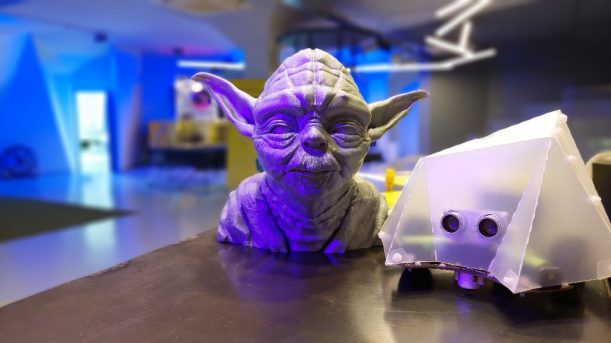 Electronics
Electronics
Star Wars, 2001 A Space Odyssey, Apollo 11, Wall-E are just some of the space themed movies. In the Electronics section we enter the magical world of special effects and more specifically the sound effects of space movies. We leave the digital world and "play" old school analogue. Design and construction of laser effect electronic circuit. We discover sound wave oscillations, play with materials and learn about resistors, capacitors, transistors and piezoelectric elements. We design our circuit and test it in simulation. When we are sure that everything works as it should, we "put on" the soldering irons and solder our own electronic boards. We check, test and repair possible problems by doing problem solving. George Lucas get ready here we come!
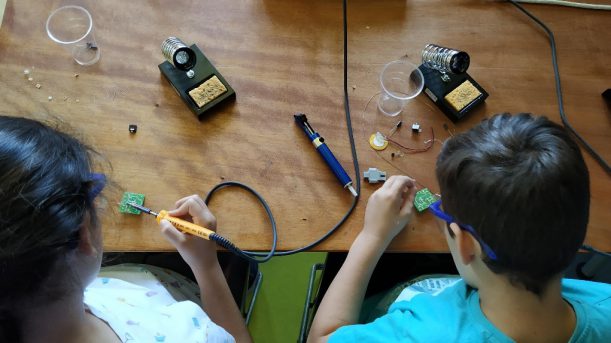 Video Games Coding
Video Games Coding
Design and programming of space-themed video games. We analyze video games from the perspective of the designer. Does the thematic scenario, sound, graphics, mechanics and rules of the game play a role? We learn Microsoft's Makecode Arcade programming language which enables us to program our own game in a simple and easy way. We use rules of physics and put speed and acceleration into play, learn and use coordinates on the X and Y axes, finally seeing the real utility of mathematics. We use variables and make point counters, timers and "lives" to make our game interesting and competitive. We start with an introductory classic like Space Invaders and end up with our very own adventure platformer game with many levels and of course a space theme!
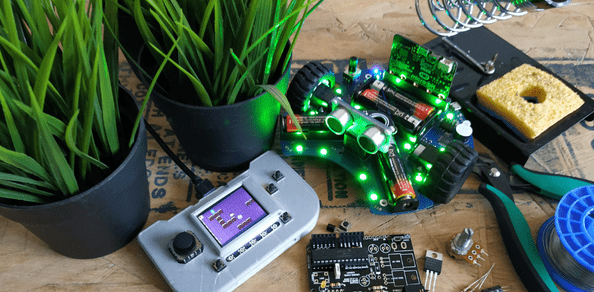 3D modelling - 3D printing
3D modelling - 3D printing
We are inspired by the Ingenuity Helicopter, the autonomous drone that flies on the planet Mars and helps the Perseverance Rover, and we use digital fabrication technology (CAD/CAM system) to build a flying machine. 3D design with CAD technology (computer aided design) and construction of the 3D model with the help of a 3D printer (CAM computer aided manufacture). Through this whole process we understand the operating principles of the 3D printer, the various techniques, the concept of slicing and the translation of the model into machine language, as well as the maintenance procedures of the machine. Will your own 3D printed model be able to fly? What role does center axle weight play? The dial angle of the impeller? The number of wings?
By participating and successfully completing each workshop you become the recipient of the unique honorary badge of each activity. The participants who manage to collect all the badges will participate in a special surprise project at the end of the year!
Rounds of 2 meetings for each topic
Duration of each meeting: 120'
Number of participants: 15 people
Age: 4th grade - 2nd high school
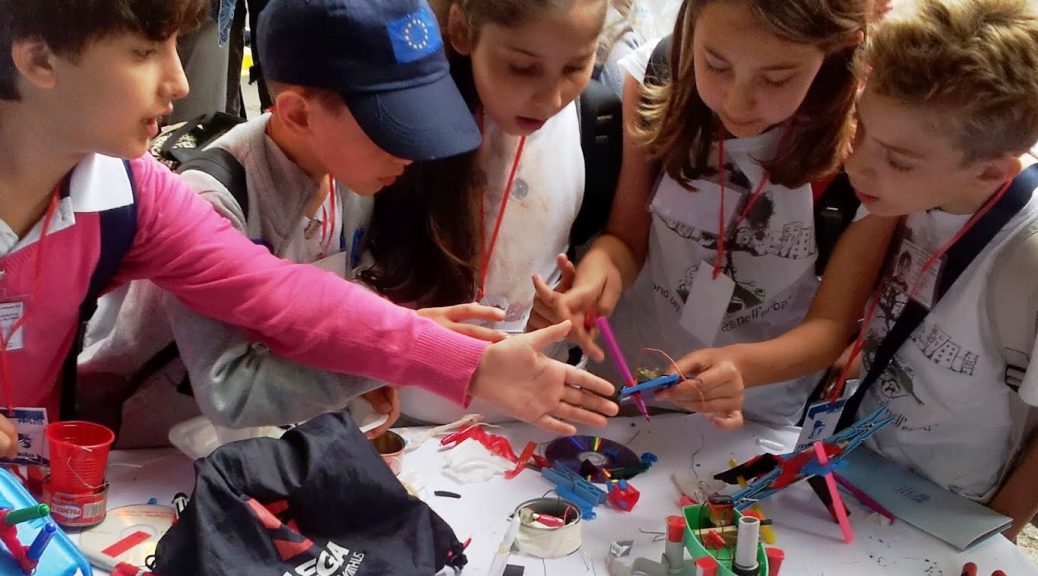
Scientific routes
This year's Peiramatistas carve scientific paths, in the footsteps of Odysseus, on the way to the Moon, on the journey of light, on the paths of the car. There will be four workshops with a common element of the course, the journey, in the literal or metaphorical sense. Technology has its own paths. It is all a journey of the mind and intellect that does not stop moving forward, discovering, exploring new paths in the history of science.
STEAM experiential workshops (Science, Technology, Engineering, Art, Mathematics) combine experiments, constructions, games. Each workshop focuses on one topic: Cartography and cruising, space travel, optical physics, automotive technology.
The four laboratories in detail:
In the footsteps of Odysseus
A workshop on sea voyages, buoyancy and navigation, cartography, wind power, water transport, on the occasion of Odysseus' voyage. It is essentially a preparation for a sailing trip in the laboratory. "Shipbuilders and sailors, cartographers and geographers" follow the course of Odysseus. The workshop includes experiments and constructions on the subject of buoyancy, creative constructions of floating means with sail with simple materials (straws, sticks, etc.), construction of a wind vane, game with coordinates on the map of the Mediterranean.
On the way to the Moon
Space travel, missions to the Moon, launches, life in space. All this on the occasion of the 50th anniversary of the first mission to the Moon. We will organize a space mission, overcoming gravity, building a launch system, observing the phases of the Moon, we will reach the first step of man on the moon. It is an introductory laboratory in the world of space travel. With the snapshots from the first moon and the power of imagination, we will relive an important moment in the history of science.
The journey of light
An investigation into optical physics, light and shadow, solar energy, colors, visual perception, photography and animation. In the workshop we will talk about the power of light and solar energy, the composition and analysis of colors, shadow and translucent materials, image capture and animation. We will create projected images from the shadow of materials, we will compose colors with projections. It is a passage from the physical properties of light to the arts of shadow theater, photography and cinema.
Car routes
A tour of automotive technology, the invention of the wheel, alternative sources of propulsion, road safety, the car of the future. The road, the traffic, the scrolling, the car, the safety. These are the keywords of the laboratory. We will refer to the wheel and experiment with the scrolling of things and people, we will observe the operation of the engine in a model, we will experiment with alternative forms of engine (electric, solar, water). Finally, we will talk about the joy and safety in the car with a surprise construction!
Peiramatistas science laboratories were presented as a good educational practice at the 2nd International Conference of the University of Macedonia "Reimaging schooling", Thessaloniki, September 2015.
The organization of the content and the execution of the program is carried out by the "Knowledge and Experience".
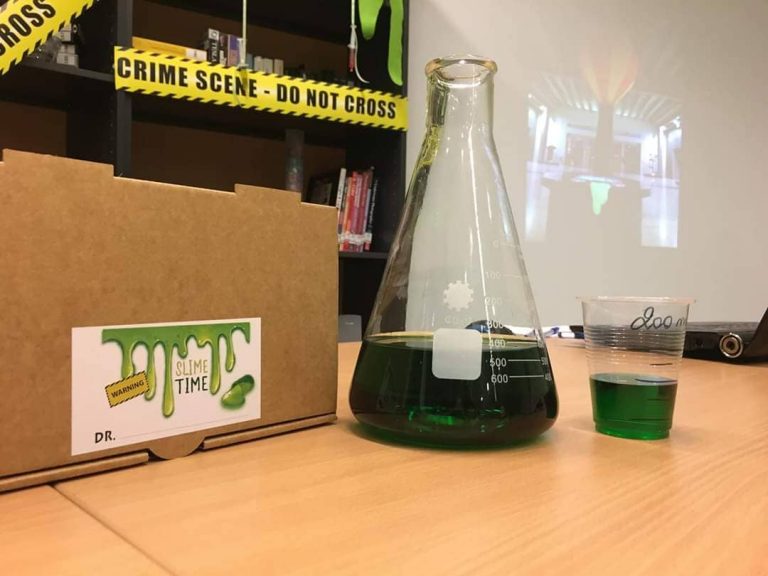 A laboratory full of entertainment and education, where young scientists engage in experiments with the central theme of polymers (slimes), observe, collect data and research, while at the end of the workshop they receive souvenirs.
A laboratory full of entertainment and education, where young scientists engage in experiments with the central theme of polymers (slimes), observe, collect data and research, while at the end of the workshop they receive souvenirs.
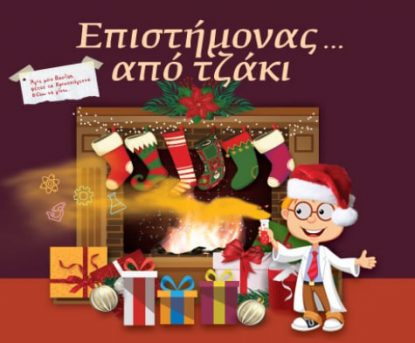
How can Christmas lights be lit? Does the reindeer eventually catch a cold and why is its nose red? What could be a scientist's favorite gem?
On the occasion of Christmas, we will answer all the above!
Within 1.5 hours the children get acquainted with STEAM.
- Engage in experiments on the theme of Christmas.
- They make "The jewel of the scientist".
- They receive souvenirs.
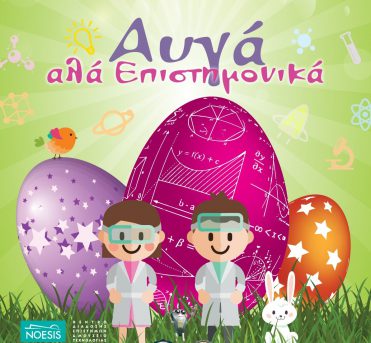
Do eggs float in water? How much power can they hide? Do they balance in incredible places? This year we will answer all this closely at NOESIS!
On the occasion of Easter customs we will explore the scientific world that hides the egg. For 1.5 hours the children will come in contact with the sciences of Physics and Chemistry and will engage in experiments and constructions starring the egg.
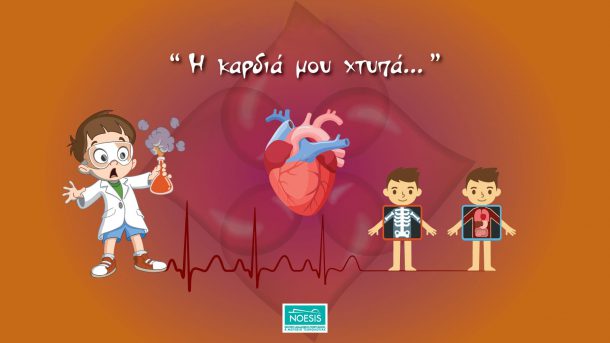
Have you ever wondered… What is the heart and how does it work? Why is our blood red? What is a pulse and how do we measure it?
In 1.5 hours the children get acquainted with the sciences of chemistry, medicine and anatomy. They will learn through thematic experiments and constructions about the function of the heart, they will discover its blood and its color!
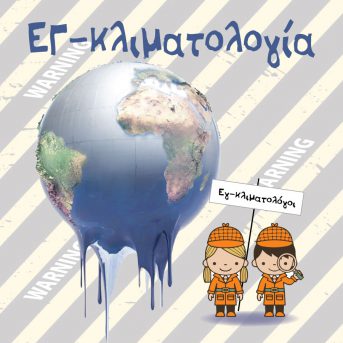
It is time to solve the mystery of climate change and become the CHANGE!
The planet is emitting SOS and our mission is in our environmental laboratory to study the phenomena of climate change and to plan the rescue of our planet before it is too late! Within 1.5 hours, children become familiar with concepts such as the greenhouse effect, CO2 emissions, recycling, etc.
For the latest Training program click here.
It is time to solve the mystery of climate change and become the CHANGE!
The planet is emitting SOS and our mission is in our environmental laboratory to study the phenomena of climate change and to plan the rescue of our planet before it is too late! Within 1.5 hours, children become familiar with concepts such as the greenhouse effect, CO2 emissions, recycling, etc.
